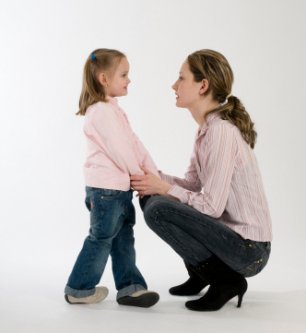
Lately, several clients have come in with pain issues that
might be avoided with a review of their environmental influences. Usually these
influencers are related to the work environment but home and family also play a
role in ergonomics. Here's an article I wrote several years ago to address some of these
issues.
Ergonomics is the science of making improvements to your
work space and daily tasks to more efficiently fit your body and routine.
Its goal is to prevent pain and injury. How does ergonomics apply to
parenting? Many mothers and grand
parents of young children sustain injuries from lifting and carrying them longer
than they should. Once a child starts
walking they should be weaned from these behaviors as they can cause wrist,
forearm, and shoulder injuries as well as lower back pain to the adult from
their repetitive nature. A better
position to address a young child’s needs is getting down to their level by
squatting, kneeling, or bending to eye level.
Holding their arm while speaking, hugging them, or sitting down and holding
the child in your lap will meet their need for love and attention without
increasing your own risk of injury. The
warning signs that can occur in your hands, wrists, arms, shoulders, neck, hips,
or back include:
-
Numbness, burning, or tingling
- Soreness, aching, or tenderness
- Pain, throbbing, or swelling
- Tightness or stiffness
- Weakness or cold
Using proper body mechanics when you do pick up a younger
child will help prevent injury.
Bend
your legs, keep your back straight, and then lift.
Position your body squarely in front up them
and not off to the side swinging them up to your hip as many moms do.
This throws off your center of gravity and
can hurt you.
Carrying your toddler on
your hip often throws it out of alignment resulting in pain as well.
Varying positions frequently and switching
hips is helpful.
As the child’s weight
increases so does your risk of injury.
Putting
your child in the car seat is another potential area for injury.
Keep the seat as close to your body as
possible as you secure them; leaning out while carrying weight is much more of
a load to the lower back.
Another piece of the puzzle not often thought about in preventing pain and
injury, is wearing shoes at home. Many
of us, here in Tucson,
have hard surfaces we walk on in our homes such as tile, hardwood, or stained
concrete. Running around barefoot
increases your potential for joint and lower back pain as the force from a hard
surface with no give compresses the bones and vertebra. A shoe or slipper offers arch support, shock
absorption from the cushioned insole, and protection from the scorpions and
spiders that live in the desert with us.
If you’re feeling lower back or hip pain think about these behaviors and
how you can adjust to better prevent injury.
This not only makes for a healthier parent, it models safe behavior to
your child as they learn and grow from watching you.
 Lately, several clients have come in with pain issues that
might be avoided with a review of their environmental influences. Usually these
influencers are related to the work environment but home and family also play a
role in ergonomics. Here's an article I wrote several years ago to address some of these
issues.
Lately, several clients have come in with pain issues that
might be avoided with a review of their environmental influences. Usually these
influencers are related to the work environment but home and family also play a
role in ergonomics. Here's an article I wrote several years ago to address some of these
issues.

